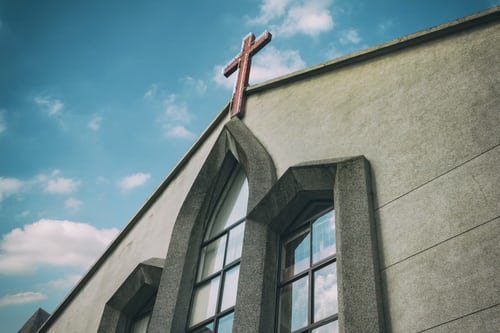Most people associate the word church with a structure or building. It might be a magnificent structure or an average building where worshippers meet. However, a Christian church is far more than just a structure in biblical terms. Many Christians argue that the church isn’t a structure but a community of people. But what exactly is a church? Ecclesiology is a branch of theology that aims to comprehend all elements of the church. It comes from the Greek word ekklesia, which refers to a meeting or gathering in general.

The church is where Christians meet to say prayers and remember God. It is considered one of the holiest places in the world. At one point in history, after the fall of the Roman Empire, it was regarded as one of the most powerful entities in the Christian world. There are many impressive churches worldwide famous for their history or their structure. But do you know where was the first Christian church built? Let’s find out.
Is Church A Building?
There were no buildings in the early Christian church, at least not how people think of churches today. Christians in the first century were frequently punished if they were found worshipping God in public or gatherings, so they met in secret, generally in their houses. As Christianity’s popularity grew, facilities devoted to worship were built, ultimately becoming what people now known as churches. In this view, the church comprises people rather than buildings. People, not structures, perform worship, fellowship, and ministry. Church institutions facilitate the duty of God’s people.
What Is The Role Of the Church?

As discussed above, the church is not a structure but a community of Christians with a distinct essence and mission. The church’s theological functions or ministries are essential to its existence. What do these roles entail? There are numerous, but worship, education, and evangelism are vital to any church. Worship is concentrated on God and Christ. It is about showing peoples’ love by praising their Creator, not impressing Christians with dazzling displays or demonstrations.
In worship, Christians are to honor and glorify God. As a result, every Christian should participate in regular worship and fellowship. The church’s function also includes preaching.
It entails enlightening Christians, providing them knowledge, and assisting them in their Christian growth. Churches are entrusted with various activities, including Bible study, lifelong learning in relevant fields, caring for one another, genuine hospitality, and more.
The church’s involvement in evangelism is equally crucial. This entails sharing the positive message about Jesus Christ with a lost world. Because people frequently have questions or reservations regarding Christ, the church’s mission includes understanding the truth and being ready to defend it.
If a Christian church fails to uphold any of these crucial duties, it’s not operating in the way that God intended. Granted, churches confront hurdles and struggles from time to time, but a thriving church attempts to overcome these obstacles in a manner that glorifies God and His purposes for His people.
Early Christian Churches
Early Christian groups met in private houses and shelters to sing songs, listen to biblical readings, pray and worship all day, and remember events such as the Last Supper. Christians were punished if they were found worshipping, so they contained themselves in small gatherings and had secret meet-up places or even prayed during the night.
The early churches were simple structures. They were made of massive stones, had few openings, and were quite gloomy. There were no pillars or statuary, as in the temples of Greek and Rome, and the primary goal appears to have been to construct a big enough room for prayer. In the early Christian era, churches were typically tiny chambers with just enough area to gather a few people. Towers were frequently built as observation points and defense positions since they were occasionally assaulted.
Church buildings were strictly prohibited by the Jewish and Roman communities until the Roman Empire was Christianized by Constantine.
The First Christian Church
Aqaba, Jordan, is home to the world’s oldest purpose-built Christian church that is known. The structure precedes both the Church of the Holy Sepulcher in Jerusalem, Israel, and the famous Church of the Nativity in Bethlehem, West Bank, which were both built in the late 320s. It even precedes one of the most severe anti-Christian prosecutions, the Diocletian’s persecution of Christians in 303–313.
The church, whose remnants were discovered in 1998, is shaped like an east-west basilica.

It was initially designed to house around 60 people, but it was later expanded to hold roughly 100. The structure is known to have been abandoned between 303 and 311 and subsequently restored between 313 and 330. In 363, it was demolished by an earthquake.
Although several people argue that this is the first church, some historians claim the Dura-Europos to be the first or oldest known Christian church. It is thought that the structure was a private residence before it was utilized as a church. The site is now in ruins. A group of French and American archaeologists explored the church during the 1920s.
Our Final Thoughts
The church is one of the most critical places in the Christian community. It is considered a holy place or building where people come to pray and offer their worship to God and Jesus Christ. It is also a place where they learn about the teachings of God and learn about how to follow them. The early churches were quite different from the ones we have today. Early Christians had to face a lot of challenges for preaching and worshipping. Hence, the churches were not allowed to be built.
Coming to the question of “Where was the first Christian church built?”, early churches were built in homes or secret chambers. Most religious and historical sources indicate that the ruins found in Aqaba, Jordan, belong to the oldest known purpose-built church.







